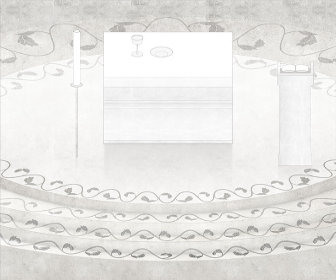Caruso St John Architects to redesign the chancel of the Cathedral of St Gallen
London-based practice Caruso St John Architects has won the competition to redesign the chancel of the Cathedral of St Gallen in Switzerland, featuring a raised design that brings the liturgical rituals closer to the congregation.
Caruso St John Architects has won the competition by beating entries from an invited international group of architects and artists, including Aires Mateus and Pipilotti Rist.
The 18th century structure is a Baroque cathedral that follows the usual form, with the altar set at its far eastern end, separated from the congregation by the choir and rood screen. Caruso St John has proposed the new design as a response to the building’s current use. The architect’s design includes a raised chancel at the crossing of the nave and transept, in an attempt to bring the liturgical rituals closer to the congregation. The design also features a sequence of concentric oval steps in white, polished, precast concrete that rises up to form a platform.
According to Adam Caruso, the symbolism of circles, arcs and rings is latent within the existing architecture, with its distorted domes above the aisles. The design team aimed to engage with this baroque geometry.
The steps are adorned with a winding painting of vines in dark terrazzo. This offers an optical depth to the plinth that mirrors the celestial rings in the ceiling painting above. A suspended gilded ring forms a delicate halo over the altar. The liturgical furniture is made in monolithic white concrete. Each piece is inlaid with a different precious material that responds to its status and use.
St. Gallen is both a canton and a city in the eastern part of Switzerland. In 610, an Irish monk called Gallus chose this spot for his hermitage. Later on, in 747, a Benedictine abbey was founded. With the addition of a library in the 9th century, it became a center of learning. The whole abbey precinct constituting the famous cathedral and abbey library, was declared a World Cultural Heritage in 1983.












